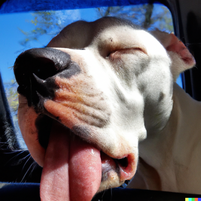| Reasonable people that make a small mistake while outside in extreme temperatures can die in this heat. Our dogs are at even higher risk, because it's easy for us to underestimate how the environment affects them. If you find youself with a heat-stressed dog, it is critical that you make the correct decisions immediately. There is all sorts of "advice" on how to treat a hyperthermic dog, most of it based on little more than something somebody read someplace on Facebook. If your dog is in distressed, you need information based on science and medicine. |
Read this paper. Share it with your friends with dogs.
"Heat-related illness (HRI) is a potentially fatal disorder that can occur in dogs following exercise or exposure to hot environments. While many risk factors can affect the probability of HRI occurring, the priority for treating dogs with HRI is early and rapid reduction in their core body temperature to limit disease progression. Cold-water immersion (conductive cooling) and water spray with air movement (evaporative cooling) are the recommended treatments for dogs with HRI, with cooling attempts in dogs with HRI being strongly advised to take place prior to transportation for veterinary care."
COOL FIRST. TRANSPORT SECOND.
| | |
To learn more about the genetics of dogs, check out
ICB's online courses
***************************************
Visit our Facebook Groups
ICB Institute of Canine Biology
...the latest canine news and research
ICB Breeding for the Future
...the science of animal breeding
To learn more about the genetics of dogs, check out
ICB's online courses
***************************************
Visit our Facebook Groups
ICB Institute of Canine Biology
...the latest canine news and research
ICB Breeding for the Future
...the science of animal breeding
To learn more about the genetics of dogs, check out
ICB's online courses
***************************************
Visit our Facebook Groups
ICB Institute of Canine Biology
...the latest canine news and research
ICB Breeding for the Future
...the science of animal breeding



